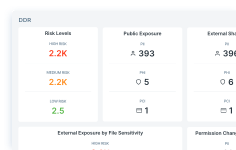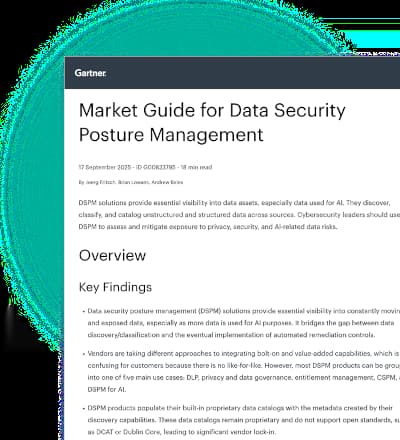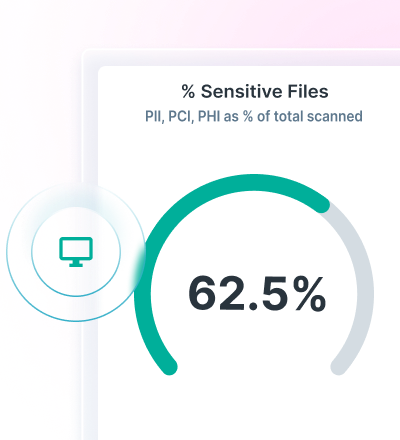Your Data Has Left the Building: Key Indicators You Shouldn't Ignore
0 min read

Neeraj Nayak
Data drives modern business innovation, but it also introduces significant risks. As data flows freely across endpoints, clouds and collaboration platforms, the potential for exposure grows exponentially. With gaps in data visibility, lack of context with human-based data classification, anomalous data movement or malicious insider are just a few of the problems.
Legacy data protection solutions can’t keep up. They inherently have blind spots, are prone to noisy false positives and depend on business-as-usual approaches the simply fall short. In contrast, new entrants to the data security industry are one trick pony that do not understand the full spectrum of data security.
Forcepoint, with its Data Security Everywhere approach, is on a mission to protect sensitive data across its entire lifecycle — wherever it resides, moves or is accessed. Forcepoint has been forging ground on redrawing the data security landscape with recent acquisitions and AI solutions.
One of its newest innovations is Data Detection and Response (DDR). DDR plays a critical role in protecting data-in-use. It continuously monitors how users interact with data, detecting risky behaviors and triggering timely responses before data can be misused or exfiltrated. DDR helps in shifting the focus of traditional security practices to data-centric cybersecurity with continuous data detection, AI-powered classification and intelligent protection that keeps pace with how the data is used.
The Rising Tide of Enterprise Data Exposure
Enterprises across every industry are generating and consuming data at an unprecedented scale. From cloud-native applications like Microsoft 365 and Google Workspace to IaaS platforms and hybrid infrastructures, data is everywhere. However, this rapid data sprawl has expanded the cyber-attack surface. The average cost of a data breach hit USD $4.88 million in 2024, with financial and healthcare sectors facing even higher losses. Even more concerning is the fact that it takes organizations an average of 258 days to identify and contain a breach. That’s 258 days of potential exposure, reputational damage, and regulatory risk. Given this reality, it is crucial for enterprises to identify the early warning signs of data breaches, before the damage gets done.
What are Key Indicators of Data Breaches?
While many organizations invest in perimeter security, breaches often stem from within—through insider threats, accidental sharing and misuse. Here are some of the most telling signs of a potential data breach:
- Data oversharing: Sensitive data (e.g., PII, financials, IP) being shared externally or beyond intended recipients.
- Unexpected file changes: Unauthorized edits or additions to files, especially those containing sensitive content.
- Unusual access patterns: Abnormal volume of data accessed or downloaded by a single user or account, signalling an insider threat.
- Data exfiltration attempts: Files being duplicated, renamed, or moved in ways that suggest preparation for exfiltration.
- Unusual activities: Surges in data usage alerts or events that may indicate exploitation in progress.
How Forcepoint DDR Can Help
Forcepoint DDR, a key component of Forcepoint's Data Security Everywhere vision, protects data through a combination of continuous monitoring, AI-powered classification, and automated response mechanisms, across clouds and endpoint locations. Here's how it addresses the breach indicators above:
- Using AI Mesh classification to identify sensitive data and sending alerts to security teams when such data is shared beyond authorized users and systems.
- Combining data classification with data lineage tracking to identify if the data in use is sensitive or regulated. Data lineage increases data exfiltration visibility, revealing a malicious chain of events or an accidental breach.
- Detecting the movement of data and ensuring that data remains within authorized boundaries, protecting intellectual property and sensitive information.
Forcepoint DDR reduces the response time to potential data breaches by prioritizing and sending alerts based on detected data risk threats. The solution further integrates with popular SIEM and SOAR solutions to improve the incident response and threat management. The result is faster detection and rapid mitigation — reducing the dwell time of attackers and minimizing potential damage.
A Free Data Risk Assessment Highlights Data Risks
The consequences of a data breach can be catastrophic. Yet, too often, early indicators of compromise are overlooked or buried under alert fatigue. By detecting early indicators of compromise and automating responses, Forcepoint DDR empowers security teams with the right visibility and controls in place to stay ahead of evolving threats. In today's digital world where data protection isn't optional, DDR has become a business imperative.
If you’re interested in identifying at-risk data in your organization’s environment, sign up for a free Forcepoint Data Risk Assessment today.

Neeraj Nayak
Read more articles by Neeraj NayakNeeraj Nayak is a Senior Product Marketing Manager at Forcepoint. With over a decade of experience in the cybersecurity industry, Neeraj has a deep understanding of cybersecurity solutions including SASE, SSE, CASB, ZTNA, DLP, and SD-WAN. Neeraj previously held product marketing roles at Netskope, Skyhigh Security and Lookout. Neeraj holds an MBA degree from IIM Mumbai and an Engineering degree from NIT Warangal.
- Expose risk with a free Forcepoint Data Risk Assessment
In the Article
 Expose risk with a free Forcepoint Data Risk AssessmentSign up for a Data Risk Assessment
Expose risk with a free Forcepoint Data Risk AssessmentSign up for a Data Risk Assessment
X-Labs
Get insight, analysis & news straight to your inbox

To the Point
Cybersecurity
A Podcast covering latest trends and topics in the world of cybersecurity
Listen Now









